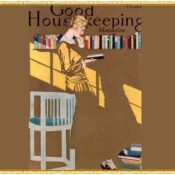You can’t see it, or taste it, or smell it, but radon can still harm you — slowly, and with no detectable warning signs. In fact, radon is the second leading cause of lung cancer, responsible for about 21,000 lung cancer deaths each year.
Radon is formed by the natural decay of uranium in rock, soil, and water. The radioactive gas typically moves up through the ground and comes into homes through cracks in floors, walls, and foundations. It breaks down quickly, giving off tiny radioactive particles.
“As radon gas breaks down, the particles lodge themselves in the alveoli, the tiny air sacs in the lungs,” says radiation safety expert Michael Bellamy, Ph.D., a medical physicist at Memorial Sloan Kettering Cancer Center. “Or the radon gas molecules themselves attach to small dust particles, which go into the deep part of the lungs. Either way, once present, the energy they give off can damage lung cells and eventually lead to cancer.”
Despite the risks, 75 percent of the public has never tested their homes for the gas, according to a recent survey by the Ohio State University Cancer Center. Another 50 percent responded that they are not concerned about exposure.
The good news is that inexpensive and easy testing can help prevent many radon-related lung cancer deaths, according to the CDC. Typical DIY test kits can be purchased online or at home improvement stores for about $20 to $30 and take only a few minutes.
“It usually is about the size of a hockey puck and has perforated holes and charcoal inside,” Dr. Bellamy says. “You open it, like you would an air freshener, leave it sitting for a few days in your house in one of the lower-level rooms, and then send it off to a lab for testing.”
January is National Radon Action Month — the perfect time to make the move to protect you and your family.
“The EPA has a great message,” Dr. Bellamy says, “which is very clear: ‘Test. Fix. Save a life.’”
This article is featured in the January/February 2025 issue of The Saturday Evening Post. Subscribe to the magazine for more art, inspiring stories, fiction, humor, and features from our archives.
Become a Saturday Evening Post member and enjoy unlimited access. Subscribe now




Comments
There is something to this Radon issue. I know of a family who lived in a house in TN which was built before and survived the Civil War. There were five members of that family which included a father, mother, daughter, and two sons. All three of the male members of that family contracted cancer. The two sons both contracted Hodgkins. The father developed lung cancer. The two sons were crippled with their devastating disease before passing on. The father passed on between the two sons passings. To my knowledge, the daughter is still alive but I’m not sure about the mother.
Oddly enough, inside the same house years later involving another family yet another adult male living there came down with cancer. Fortunately, he is in remission to date.